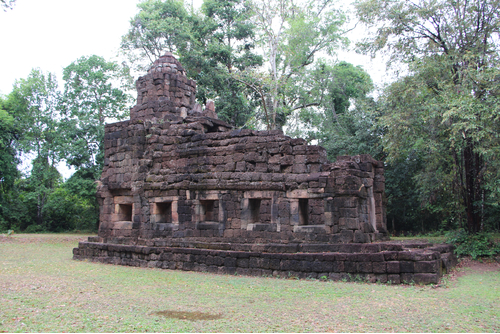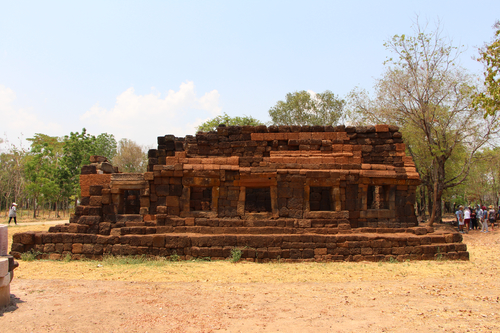Artwork Search
Arts in Southeast Asia Database
ArchitecturePrasat Ta Muen
The diagram of Prasat Ta Muen is a characteristic of an archaeological site called "Dharamshala or a traveler's lodge" which King Jayavarman VII, around the 18th century, had ordered to build along the important routes throughout the kingdom. The place is a single prasat constructed with laterite and sandstone. The diagram is a square with recessed corners. The front of the prasat is a long room built of laterite. There is a door connected to the prasat on the west. This long room has one wall cut into a row of windows. Other walls were made of false windows. There is one entrance and exit on the east with a sandstone lintel carved into a Buddha image sitting cross-legged in a meditating position.
ArchitecturePrasat Ban Bu
A rectangular building stretching east-west with a front entrance which is facing east. The back is the building of the prasat which is divided into a square-shaped room.As for the construction or the entrance door frame, sandstone with four flower petals were originally used by turning the engraved sandstone on the inward. The reuse of materials of older arts is similar to Prang Hin Daeng at Prasat Hin Phimai. In addition, a large lotus peak joining arts with Bayon was found. This is similar to the gopura’s peak of Prasat Preah Khan in Cambodia. The connected southern walkway has three window portholes and one hole at the porch on the north. The upper part is dense and almost completely ruined. There is a curved roof over the walkway built between the prasat’s building and the porch.



